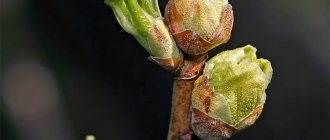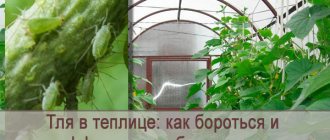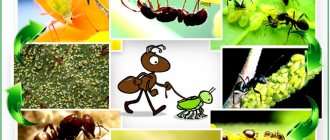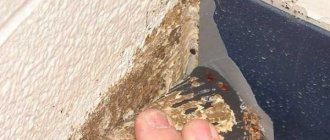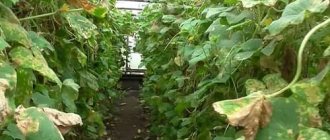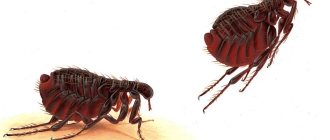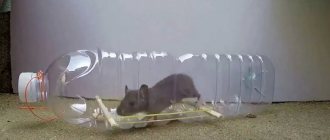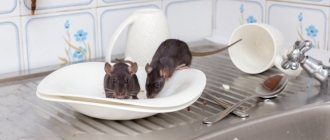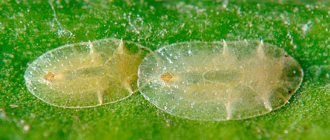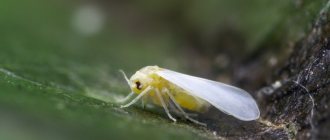The aphid gives the impression of a miniature and absolutely innocent insect. However, the harmlessness of this tiny insect is illusory. In fact, aphids are an insatiable consumer of plant food, which is not so easy to destroy. In a greenhouse on cucumbers, an insect can quickly destroy a significant part of the crop. To protect at least a share of cucumbers, you need to have knowledge about the fight against these insects and use special preparations in a timely manner.
Why I chose these methods for controlling aphids in the greenhouse
Aphids only seem like small and harmless insects. For us gardeners, this is a serious enemy, a difficult to exterminate phytophage that destroys cultivated plantings. Aphids feed on the cell juices of greenhouse cucumbers - a small colony of pests can dry out and destroy one bush in about a week.
This is a separate superfamily of the order Hemiptera. Within it there are 10 more families, uniting about 4 thousand varieties of aphids. Despite this diversity, the insects are very similar to each other: 1.5-7 mm in length, translucent, pale yellow or pale green. Includes both wingless and winged individuals.
The life cycle of insects begins in early spring and ends in late autumn. All this time, voracious phytophages feed on the nutritious cell sap of plants.
The following types of aphids are dangerous for greenhouse cucumbers:
- Greenhouse. They feed on all garden vegetation.
- Melons. They prefer cucumbers, zucchini, and melons.
- Potato. They feed on nightshades, but in their absence they switch to cucumbers and greens.
In order to prevent the appearance of voracious aphids on my site, I turn to prevention. I consider agrotechnical methods to be a sufficient means of counteraction - I plant “repellent” plants in greenhouses that are unloved by these phytophages, strengthen the immunity of weak bushes, and attract natural enemies of aphids to greenhouses.
If such preventive measures are not enough, I turn to proven and safe folk “recipes”. When the pest invasion is large-scale, I buy chemicals and fight not only aphids, but also their carriers – ants.
ants in the garden
Agrotechnical methods of combating aphids in a greenhouse
By sucking out cell sap, aphids weaken the plant and undermine its immunity. This inhibits cucumber growth, promotes the development of diseases, and leads to the death of the bush. There is also a danger in the spread of phytopathogenic fungi and viruses. The products of its vital activity clog the stomata of leaf blades, which makes it difficult for plants to breathe and inhibits the processes of photosynthesis. Turning to simple agrotechnical pest control will help prevent all these negative consequences.
Attracting biological enemies
Aphids have a lot of natural enemies:
- earwigs;
- ladybugs;
- predatory wasps;
- lacewings;
- hover flies.
Ladybugs are especially active in eating aphids. Carefully collect insects throughout the garden, transfer them to the greenhouse closer to the leaves and shoots affected by aphids.
During a fine day, keep the doors and windows of the greenhouse open so that the “eaters” of aphids can get in there themselves. Flying insects are attracted by the smell of fennel, coriander and dill. For earwigs that are afraid of light, you can build houses from sawdust sprinkled with water.
enemies aphids ladybugs
Planting bait plants
Use a trick - plant plants in the greenhouse whose taste will appeal to aphids more than cucumbers:
- legumes;
- dill;
- sow
You can plant younger cucumber bushes that are specifically intended to be eaten. Regularly inspect baits for pests. As soon as a large number of aphids accumulate on the plant, carefully pull it out by the roots and destroy it.
Planting repellent plants
Aphids do not like many common garden flowers and herbs:
- mustard;
- marigold;
- basil;
- cilantro;
- mint.
“Repellers” can be planted around the perimeter of the greenhouse and between the cucumber beds. They will protect the plantings not only from aphids, but also from other uninvited guests. Ants do not like mint, and marigolds and basil do not like mole crickets and nematodes.
Strengthening plant immunity
An indirect way to counteract aphids is to adhere to the feeding schedule and apply the necessary fertilizers. This increases the resistance (immunity) of cucumbers to pests and pathogens, and accelerates the regeneration (restoration) of damaged tissues.
I advise you to pay attention to the following points:
- An excess of nitrogen fertilizing is a risk factor for aphid invasion. The abundance of young and juicy soft green mass attracts the pest.
- Potassium-phosphorus fertilizers stimulate leaf coarsening and the accumulation of active substances that increase the osmotic pressure of cell juices. These factors make the plantings unattractive and inedible for phytophages.
For these purposes, I recommend fertilizing the greenhouse soil with dry potassium and phosphate compounds during the autumn preparation of the greenhouse. During the summer season, periodically spray the above-ground part of the cucumber bush with the following composition: 1 tbsp. a spoonful of superphosphate in granules, 1 teaspoon of potassium chloride per 1 bucket of water.
Proper watering is also important for plants - only with heated water. At the first stages of development, cucumbers are watered with infusions of weak concentration: tomato, nettle. Air humidity in the greenhouse is maintained at 75-80%.
Temperature conditions are required: during the day – 25-30 C, at night – 15-18 C. Sudden changes reduce the immunity of plants and make them susceptible to pests.
Harm
The usual time for an aphid attack is the second half of summer, since the pest begins active reproduction in July. Located in colonies on the underside of cucumber leaves, melon aphids feed on sap (you can find out more about what aphids feed in nature here).
The bushes begin to lose strength, the leaves turn yellow and curl, and the growth of cucumbers slows down. Black aphids cause no less harm to cucumbers. The voracious family attacks almost all parts of the plant :
- stem;
- foliage;
- inflorescences;
- ripening fruits.
A young plant attacked by a colony of aphids is unable to develop and produce an ovary. Most of the cucumbers die.
Cucumbers suffer from aphid invasion not only in the open ground, but also in the greenhouse. The sugary juice (honeydew) secreted by insects glues cucumber leaves together and is a good bait for other garden pests.
Traditional methods of controlling aphids in a greenhouse
The appearance of a voracious phytophage in a cucumber greenhouse is signaled by the following:
- The appearance on the leaves and stems of numerous “pimples” - light green translucent pests.
- Deformed tops of bushes.
- Sticky, whitish spots on leaves.
- Twisted shoots.
- Ants scurrying around the greenhouse and cucumbers.
Aphids reproduce quickly - conduct a thorough inspection of the plantings at least once a week. Don’t hesitate when these signs appear - at first, aphids can be easily dealt with using safe folk remedies.
Spraying against aphids with plant infusions
The following herbal infusions are effective:
- Peppery. Finely rub and chop 1 kg of hot pepper. Pour the mixture into 3 liters of water and cook it over low heat for 1 hour. Place the pot with the broth in a warm place for 2 days. Then strain and use for spraying and irrigation. ½ cup of concentrated mixture per 5 liters of water is enough. If you have any excess solution left, pour it into dark glass jars or bottles and store it in the refrigerator.
- Garlic-dandelion. Collect 0.5 kg of dandelions and remove the flowers from them. Finely chop the green mass along with the roots, grate 3 medium garlic heads. Tip the mixture into a bucket, add warm water, and mix thoroughly. After 2 hours, strain and use the solution to spray the affected bushes.
- Onion. Add ½ bucket of onion peel to the rim with water. Cover with a lid and leave in direct sunlight. After a day, strain, dilute with water to a total volume of 10 liters. The solution is suitable both for spraying green mass and for watering the ground under cucumbers.
I recommend applying the treatment in the evening or in cloudy weather. Be sure to spray the leaf both from the outside and from the inside.
Treating cucumbers with soapy water
Let me introduce you to the well-known “old-fashioned” method of counteraction:
- Grate a block of tar or laundry soap until fine shavings.
- Heat a bucket of water to 60-70 C.
- Stir the prepared shavings into the liquid (until completely dissolved).
As soon as the solution has cooled, spray the affected plantings with it. Carefully process the leaves on both sides - aphids love the back parts - the “wrong side”.
Washing with water jet
If aphids only “taste” your cucumbers, try giving your plantings a “bath day.” Water the plants with a hose using a special spray nozzle. Thoroughly wash the affected leaves with jets of water from the front and back. Hold them with your fingers so they don’t break off from the pressure.
Powerful streams of water will wash weightless aphids to the ground. To prevent pests from having time to come to their senses, thoroughly pollinate the soil under the cucumbers with stove ash. Carry out “bath procedures” late in the evening, on a cloudy day, otherwise you will provoke sunburn of the leaves. Use warm water to avoid weakening a plant already affected by the pest.
Description of the pest
It’s worth clarifying right away that there is no separate family called “black aphid.” This is what people call aphid species with black, dark blue and green-brown colors. The pest is a tiny insect, not exceeding 5 mm in size.
Did you know? Insects appeared on Earth much earlier than other animals - approximately 400 million years before the present day. The endurance of these small creatures is so high that they are able to survive any disaster. Even if humanity exterminates itself, it is unlikely that it will be able to completely destroy insects.
To procreate, the female black aphid does not require the reproductive cells of a male individual, so these parasites reproduce at high speed. The female lays eggs on the food vegetation itself, where they can safely overwinter.
The life cycle of aphids is very short - after reaching maturity, the individual lives only 2 weeks. During this short period, the female is able to lay up to 150 eggs. The larvae begin to parasitize immediately after hatching.
Aphids usually settle on the bottom of leaves, where they feed on the juice of young cucumber leaves and shoots rich in carbohydrates and individual amino acids. The insect is endowed with a special proboscis, with the help of which it can suck juice from fairly thick plant skins.
Determining the presence of aphids is not difficult. Small pests can be found on leaves, flowers, ovaries and shoots of garden crops. Often, aphids first attack the weeds around the garden, then the aphids successfully move onto vegetables.
We recommend reading
How to grow cucumbers correctly The threat of black aphids lies in the high density of their accumulation on the bush. Due to lack of food, they have to fly from bush to bush. A mass of individuals attack a leaf plate or other part of the plant, pierce its surface and allow bacteria access there.
When infected with fungal spores, the plant begins to rot rapidly. Aphids drain all their strength from the tissues of seedlings; as a result, the garden crop dies before it has time to bear fruit.
Chemical methods
I advise taking such a drastic measure only if the greenhouse is completely infested with parasites. You will work with potent poisons that are also dangerous to the human body. Therefore, do not forget about closed clothes and shoes, glasses, a respirator, and rubber gloves. Proceed according to the instructions - exceeding the dosage does not always increase the effectiveness of the drug, but can lead to fatal consequences.
Treatment with herbal remedies
Herbal remedies are preparations made from natural raw materials. They contain plant poisons or viruses, fungal pathogens that parasitize the body of a certain type of insect, causing its death. They can cause serious poisoning or paralyze the nervous system of aphids. At the same time, herbal medicines are harmless to cucumbers, beneficial insects and humans.
Among the most popular and effective are:
- "Fitoverm": 4-6 ml per 1 liter of water. The evening hours are chosen for treatment: the affected stems and leaves on both sides are moistened with the composition. For a week after this, drip irrigation is prohibited so as not to wash off the product. It is enough to repeat the treatment with Fitoverm every 15 days.
- "Akarin": 6 ml per 1 liter of water. The plantings are sprayed with the product one day after watering. It is especially effective in hot weather. After a day, the next watering is already possible. To destroy an aphid colony, a single treatment with Akarin is sufficient.
- "Actofit": 8 ml per 1 liter of water. The leaves are sprayed with the preparation, then they are not wetted for 8-10 hours. 2 days after treatment you can harvest. To combat aphids, two sprays with Actofit per season are sufficient.
To increase the effectiveness of herbal remedies, experienced gardeners advise adding 1 teaspoon of soap solution to the prepared composition.
Spraying and treating soil with insecticides
The use of insecticides on cucumbers is not always justified - the plants have a short growing season. Slowly decomposing pesticides will not have time to completely dissolve by the time the greens ripen, which makes them unsafe to eat.
All effective insecticides can be divided into three categories:
- Organophosphorus compounds: “Aktellik”, “Nurel D”, “Dursban”. The harvest becomes safe after 14 days.
- Neonicotinoids: Bombardier, Vector, Confidor, Dantop, Tanrek, Mospilan, Ratibor. Zelentsy are harvested 3 weeks after processing.
- Pyrethroids: Arrivo, Decis, Kinmiks, Sherpa, Fury. Cucumbers become edible 2 weeks after spraying.
It makes sense to use potent synthetic compounds when the phytophage has infected more than 1/4 of your greenhouse plantings. Powerful drugs can destroy the pest within a few hours after treatment. But toxic components will remain in plants and fruits for a long time. Therefore, before using “chemistry”, always evaluate the consequences of insect control.
Fumigation with a sulfur bomb
A surefire way to resist an aphid invasion is to fumigate the greenhouse with a sulfur bomb. Popular varieties: “Hephaestus”, “FAS”, “Pawn”, “Climate”. The method is good for use after harvesting - the aphids go to winter, but will wake up in the spring to feast on new young shoots.
The smoke emitted (containing nicotine) is harmful to insect pests. But together with them, it kills beneficial soil bacteria and promotes corrosion of metal structures of the greenhouse.
Video
This type of insect reproduces very quickly. One female produces up to 50 larvae. And after 2 weeks, having reached a certain age, they also produce new offspring. Therefore, in a short time, a colony of insects can destroy cucumbers.
It is necessary to take urgent measures aimed at their destruction. Watch the video showing available folk remedies.
The described biological infusions and remedies are also effective against spider mites, which are common pests of pumpkin crops in the middle zone.
To prevent the spread of sucking insects on plants, it is necessary to comply with preventive requirements. Avoid densely planted beds. Weed weeds regularly and feed plants with fertilizers.
The appearance of aphids on cucumbers in a greenhouse brings a lot of trouble. If uninvited insects are detected in a timely manner, it is quite possible to get rid of them. Try folk remedies to combat them, and you will find the optimal solution for yourself.
Happy cucumber harvest to you every summer!
Prevention of aphids on cucumbers in a greenhouse
In order not to be left without a significant part of the harvest, I use universal recommendations:
- I choose unpretentious hybrids for planting, varieties that are resistant to pest invasion.
- I disinfect cucumber seeds before sowing and only propagate my own seedlings. If I have to purchase seedlings, I carefully inspect them and place them in quarantine for several days.
- I maintain a comfortable temperature and humidity for cucumbers.
- I weed the greenhouse in a timely manner - aphids and ants feel more comfortable in thickets than in open areas.
Experienced gardeners do not recommend planting mallows, chrysanthemums, nasturtiums, sunflowers and poppies near greenhouses - these plants are a favorite delicacy of aphids.
Reasons for appearance
Wingless females and larvae of aphids spend the winter in the remains of weeds. With the onset of spring, pests become more active and move to existing plants in the garden, which include vegetable crops. Usually this time coincides with the planting of seedlings in a permanent place.
Aphids settle on seedlings planted in open beds or in a greenhouse. In the first case, it affects cucumbers in June. If the seedlings are planted in a greenhouse or greenhouse, infection occurs at the end of April or in May.
Favorable conditions for the spread of aphids are:
- refusal to observe crop rotation;
- abundance of weeds in the beds;
- thickening of plantings;
- poor soil preparation before planting seedlings;
- presence of ants on the site.
Greenhouse disinfection
To prevent aphids from settling in a cucumber greenhouse, it is enough to turn to simple methods of disinfecting the space:
- Throughout the season (from planting cucumbers until the second half of July). Three (with an interval of 20 days) treatments of cucumber plantings with Fitoverma solution are enough. Approximate consumption: 1 ampoule for 6 glasses of water.
- Late autumn, end of the season. Replacement of the top layer of greenhouse substrate, soil disinfection with bleach, Bordeaux mixture, karbofos.
greenhouse treatment
I will present the instructions for use:
- Karbofos: 30 g per 10 liters of water. Water the soil with the solution until it is moistened.
- Lime chloride. A thin layer of white powder is sprinkled on the surface of the ridge, after which the soil is dug up shallowly.
- Bordeaux mixture. First of all, prepare a solution of copper sulfate: 100 g of powder per 1 liter of hot water. Then dilute with 5 liters of cold water. In another container, 100 g of lime is slaked, then 5 liters of water are poured into it. Stirring constantly, the vitriol solution is poured into the lime solution. The mixture is used to treat the internal walls and surfaces of the greenhouse.
If the predecessors were affected by aphids, I recommend treating the greenhouse with a sulfur bomb at the end of the season.
Fighting ants
From my own experience, I can judge that the appearance of aphids in a greenhouse is the work of sweet-toothed ants. The waste product of aphids is a thick liquid, “honeydew.” It contains sugars, proteins, and is a favorite delicacy for ants. Over the years of evolution, pests have learned to “breed” and “milk” aphids. Special “shepherd” ants carry their “cows” into greenhouses.
Therefore, I find that an effective way to prevent aphids is to fight their patrons:
- I systematically loosen the soil in the greenhouse, thereby destroying ant passages.
- I plant “repellent” plants: parsley, wormwood, mint, basil, lemon balm.
- I dig up anthills. I collect the contents in a bucket and burn them.
- I fill the passages and paths with boiling water, ash, garlic or soda solution, kerosene, and cover them with bleach. Dry folk remedies are also effective: mustard, ground pepper, saltpeter, ash, lime.
- I use special anti-ant agents. Some of the most effective are “Grom-2”, “Mashenka”, “Aardeater”, “Absolute”. I scatter the drug granules in places where insects accumulate. The “treat” contains poison, the consumption of which kills insects.
Take action the first time ants appear on your site. If they manage to settle, multiply, it will become very difficult to remove pests “once and for all.”
Treatment of cucumbers against aphids in a greenhouse
You can prevent the appearance of voracious aphids on greenhouse cucumbers by preventative spraying with safe solutions according to folk recipes:
- Ash-soap solution. For a bucket (10 l) of water you will need: shavings of a bar of laundry soap, 2 tbsp. spoons of ash. The contents are stirred in the liquid until completely dissolved. The mass is used to irrigate leaves and shoots of cucumbers.
- Infusion of celandine. Collect the grass and dry it. Then fill 0.3 kg of dry mass with a bucket of water. Let it sit for a day, then use it to spray the green mass of cucumbers.
- Garlic infusion. Grind 0.5 kg of garlic cloves, pour 3 liters of water over them. Leave to infuse for 5 days. A safe product can be used from time to time to prevent the spread of aphids.
- Dandelion infusion. Grind 0.6 kg of green mass and 0.4 kg of the root part of the plant, pour 3 liters of water. It is enough to infuse the solution for 3 hours. They try to treat the green mass of the plant with the product. Infusions of wormwood, potato, tomato tops, garlic and hot pepper are prepared and used in a similar way.
A seemingly small and harmless aphid is a serious enemy of the gardener, which can ruin absolutely healthy plantings and leave them without a harvest. Therefore, timely prevention of the appearance of both the pest itself and its ant protectors, and resort to useful agrotechnical methods, is so important. If aphids have already appeared in the greenhouse, you can save the plant using proven traditional methods. An extreme method of pest control is the use of pesticides and sulfur bombs.
Signs of damage and why aphids are dangerous
Most often, aphids settle on the underside of leaves, so detecting them at the very beginning of infection can be quite problematic. There are signs that will help you suspect the appearance of these harmful insects in the garden:
- the appearance of sticky drops on the above-ground parts of the plant;
- loss of turgor in young leaves;
- change in the shape of the leaf plate, its curling and withering;
- falling of flowers and ovaries;
- the appearance of a large number of ants on cucumber plantings.
Attention! Late detection of an aphid colony on a crop leads to crop loss. By drinking the plant juice, the insect causes the stems and leaves to dry out, as well as the ovaries to fall off.
